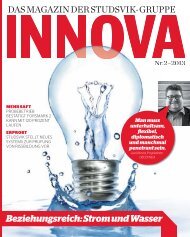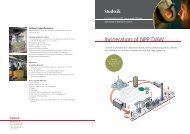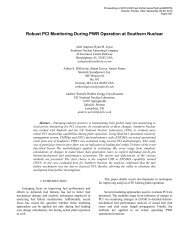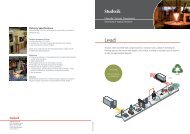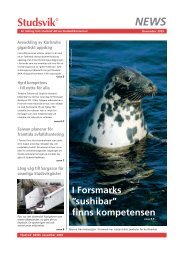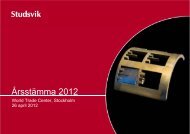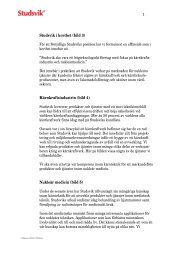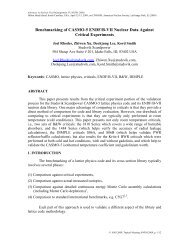Effect of CASMO-5 Cross-Section Data and Doppler ... - Studsvik
Effect of CASMO-5 Cross-Section Data and Doppler ... - Studsvik
Effect of CASMO-5 Cross-Section Data and Doppler ... - Studsvik
Create successful ePaper yourself
Turn your PDF publications into a flip-book with our unique Google optimized e-Paper software.
Gerardo Gr<strong>and</strong>i et.al.Fig.6 shows the evolution <strong>of</strong> the <strong>Doppler</strong> reactivity <strong>and</strong> the <strong>Doppler</strong> temperature during the transient.During the initial rapid power increase the problem is almost adiabatic, <strong>and</strong> the pin fuel temperature peaksnear the pellet surface due to the intra-pellet power shape (see Fig. 2). As the transient progresses, the heatconduction in the pin gradually reduces the surface temperature with respect to the centerline temperature.This behavior is illustrated in Fig. 7 for a pin in a fresh MOX assembly close to the ejected rod, <strong>and</strong> a pinin the UO 2 assembly where the rod is ejected.<strong>Doppler</strong> Reactivity ($)0.200.00-0.20-0.40-0.60-0.80NEABE1BE2GDTL<strong>Doppler</strong> Reactivity ($)-0.80-0.85-0.90-0.95-1.000.0 1.0 2.0 3.0 4.0 5.0Time (s)-1.000.0 0.5 1.0 1.5 2.0 2.5 3.0Time (s)<strong>Doppler</strong> Fuel Temperature (K)7006506005505000.0 0.5 1.0 1.5 2.0 2.5 3.0Time (s)NEABE1BE2GDTLFigure 6. <strong>Doppler</strong> reactivity <strong>and</strong> <strong>Doppler</strong> temperature. <strong>Effect</strong> <strong>of</strong> <strong>Doppler</strong> temperature definitions.MOX Fuel - Burnup 0.15 GWd/TUO2 Fuel - Burnup 37.5 GWd/TTemperature (K)1200110010009008007006005000 0.2 0.4 0.6 0.8 1Relative radiusTime (s)0.0000.1400.1450.1500.1600.2040.5041.0042.0045.000Temperature (K)1200110010009008007006005000 0.2 0.4 0.6 0.8 1Relative radiusTime (s)0.0000.1400.1450.1500.1600.2040.5041.0042.0045.000Figure 7. Evolution <strong>of</strong> the intra-pellet fuel temperature for 2 representative fuel pins.Table V summarizes the rod ejection accident results, in terms <strong>of</strong> power <strong>and</strong> fuel enthalpy, for the fourdifferent effective <strong>Doppler</strong> temperature cases. Differences with respect to the ‘BE1’ solution are alsoprovided. The main observations derived from Table V <strong>and</strong> Figs. 5-7 are: The ‘NEA’ effective <strong>Doppler</strong> temperature may predict a lower power peak depending on the corelife. However, the power generated in the after-burst computed using by the ‘NEA’ <strong>Doppler</strong>temperature will always be the highest because the heat conduction in the pin gradually increasesthe centerline temperature with respect to the surface temperature.PHYSOR 2010 – Advances in Reactor Physics to Power the Nuclear RenaissancePittsburgh, Pennsylvania, USA, May 9-14, 201010/13



